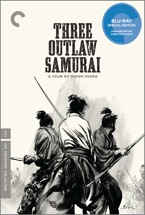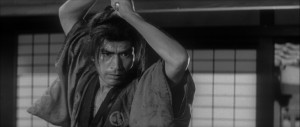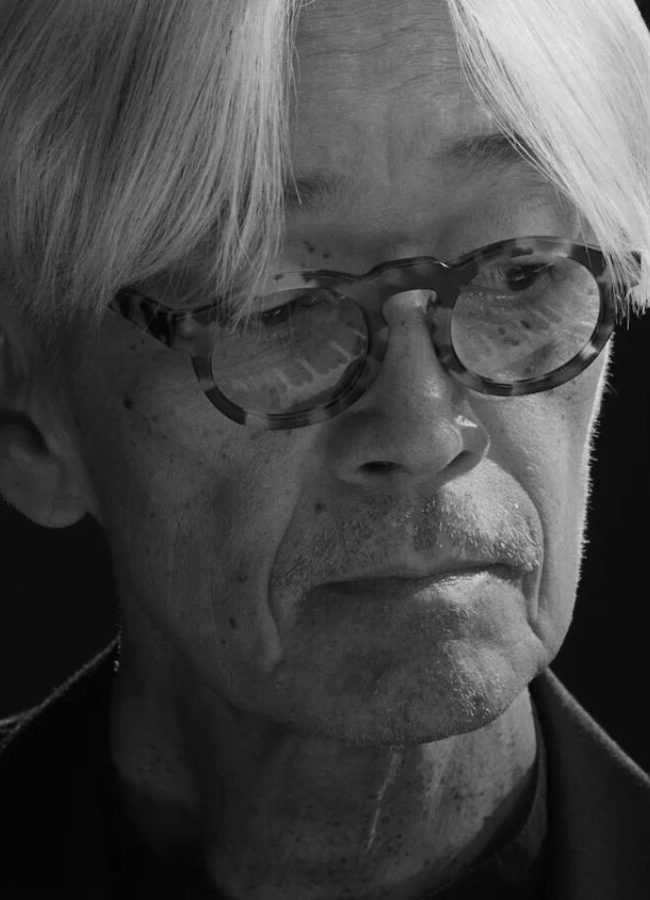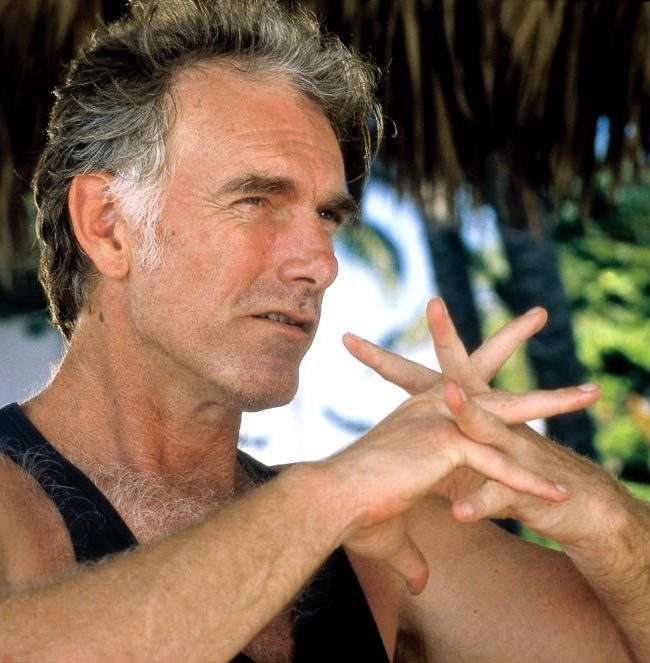THREE OUTLAW SAMURAI

(Three Outlaw Samurai was released in 1964. It is now available on DVD and Blu-ray via Criterion.)
To the uninitiated, samurai movies might seem a dime a dozen. Kurosawa alone made enough to satiate or even overwhelm most viewers’ appetites, and the Criterion Collection is home to no fewer than 20. There’s a simple answer to why these films—Yojimbo, Samurai Spy, Sword of the Beast, Kill!, Onibaba, The 47 Ronin, the list goes on—remain as appealing as they do, as well as why their abundance has never been an issue: they’re almost exclusively awesome. Swordplay as graceful as it is brutal, lopped-off heads, and the melancholy that accompanies a once-glorious era’s slow passing—there’s not a lot to dislike here. The genre features as many stoic wise men as it does blood-soaked warriors, thus functioning equally well as a collection of elegantly choreographed action vehicles and ruminative thinking pieces in a way no other tradition can lay claim to.
Hideo Gosha’s Three Outlaw Samurai is hardly an outlier in this sense, but it does distinguish itself early on with instances of off-kilter music and explosive moments of bombast—the kind of stylistic flourishes that Quentin Tarantino has been so quick to co-opt over the last few decades. For the rest of its duration the movie is comparatively sedate (at least as far as style is concerned), but carries with it an undercurrent of malaise. Honor and loyalty are almost nonexistent here, and few conflicts end bloodlessly. The three ragtag men of the title resemble a composite of many a Toshiro Mifune character, running the gamut from soft-spoken confidence to over-the-top rage. They’re a team, yes, but often a reluctant one in which each member prefers solitude to the company of others. Even at their most violent, they almost always emanate calm and never show their hand until it’s too late for their foes even to react. It’s this levelheadedness as much as it is skill with a katana that makes for a truly imposing samurai, and it’s fully embodied by these three—decisive action, direct statements.
 There’s a certain ironic nostalgia that comes with watching the film, not least because on some level the eponymous samurai seem as aware as we are that their efforts will ultimately amount to little. Not many go into these movies specifically for a treatise on peasant-nobility relations, but it’s that exact conflict which instills such urgency—and cynicism—in these warriors’ actions: a magistrate’s daughter has been kidnapped, and something needs to be done about it. Moreover, it’s woven into the narrative so subtly as to never be intrusive. The eponymous samurai play both sides against the middle, their only true masters themselves, and it’s this constant sense of ever-shifting loyalty (as well as a lack of it altogether) that makes Gosha’s film so stark. Kurosawa’s sincerest attempts at downtrodden plotting could never quite conceal that he was a humanist at heart, but Gosha doesn’t have that problem. He infuses his debut with an air of futility that would be overwhelming if the three adventurers at the center of it all didn’t carry on in spite of their dismay.
There’s a certain ironic nostalgia that comes with watching the film, not least because on some level the eponymous samurai seem as aware as we are that their efforts will ultimately amount to little. Not many go into these movies specifically for a treatise on peasant-nobility relations, but it’s that exact conflict which instills such urgency—and cynicism—in these warriors’ actions: a magistrate’s daughter has been kidnapped, and something needs to be done about it. Moreover, it’s woven into the narrative so subtly as to never be intrusive. The eponymous samurai play both sides against the middle, their only true masters themselves, and it’s this constant sense of ever-shifting loyalty (as well as a lack of it altogether) that makes Gosha’s film so stark. Kurosawa’s sincerest attempts at downtrodden plotting could never quite conceal that he was a humanist at heart, but Gosha doesn’t have that problem. He infuses his debut with an air of futility that would be overwhelming if the three adventurers at the center of it all didn’t carry on in spite of their dismay.
Audio/Visual: Three Outlaw Samurai was released in 1964, and this Blu-ray is born of an imperfect negative. That said, the image quality is quite sharp, with few instances of visible noise and a rather smooth visual transfer overall. This is most impressive during certain indoor scenes, especially a starkly-lit torture sequence that makes the characters’ faces appear even more pained and expressive than usual. The frequent widescreen shots are equally striking. As for audio, the mix is sufficiently crisp and clear, leaving little to be desired.
Supplements: A trailer on the disc and an essay in the booklet. Criterion is rarely this sparing with the extras, and I’m not sure why they were here. Ho hum.
— Michael Nordine












Pingback: HOME VIDEO PICKS – Hammer to Nail